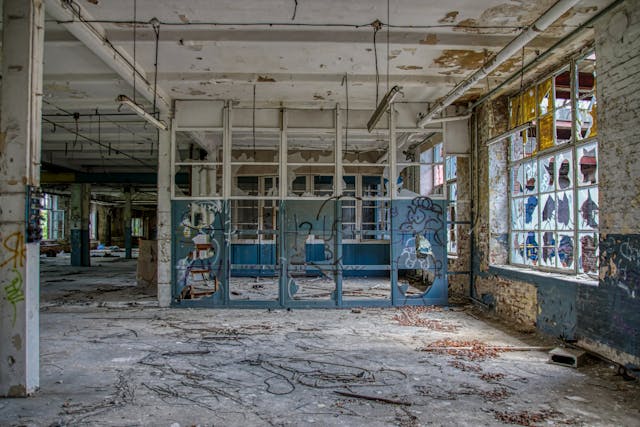Asbestos is still found in more places than most people realise. Homes, schools, office buildings, warehouses – anywhere built before the 2000s could be hiding it in plain sight. And the problem with asbestos is simple: if it’s disturbed and those fibres become airborne, it becomes a serious health risk.
The key to managing asbestos properly is not to panic, but to know exactly what you’re dealing with. If you’re responsible for a building that might contain it, there are steps you need to take to stay compliant, keep people safe, and avoid very costly mistakes.
1. Hire the Right Experts
This isn’t something you can guess your way through. The very first step in proper asbestos management is calling in qualified professionals like Cordtape Environmental. You need people who are licensed to handle asbestos safely, and not just for removal. You might need surveys, sampling, air monitoring, asbestos waste handling, and even help with regulatory paperwork. It’s a specialist area, and cutting corners here doesn’t just put health at risk; it could land you in legal trouble.
Think of the experts as your frontline. They’ll tell you where asbestos is, what condition it’s in, and what needs to be done next. Don’t try to make those decisions without them.
2. Get an Asbestos Survey Done
If you’re responsible for a building and don’t have an up-to-date asbestos survey, you’re not managing the risk properly. It’s that simple.
There are two main types of surveys:
- Management surveys – to locate asbestos-containing materials (ACMs) during normal occupancy and use.
- Refurbishment/demolition surveys – required before any major work, to find any hidden asbestos.
A professional survey will map out where asbestos is located, what type it is, how much of it there is, and what state it’s in. That information forms the basis of your asbestos management plan. Without a survey, you’re flying blind.
3. Create and Maintain an Asbestos Management Plan
Once you’ve got your survey results, the next step is putting together a solid plan. This is a legal requirement if you’re responsible for non-domestic premises.
A proper asbestos management plan should include:
- Where asbestos is located
- The condition it’s in
- What actions need to be taken (if any)
- Who’s responsible for each part of the plan
- A schedule for regular monitoring
It should be reviewed regularly, updated after any changes or inspections, and made available to anyone who may need to work in the building. This plan isn’t just a tick-box exercise. It’s your roadmap to keeping everyone safe.
4. Train Anyone Who Might Come Into Contact With It
You’d be surprised how many tradespeople and contractors still don’t know how to spot potential asbestos or what to do if they disturb it. If you manage a site, building, or business where asbestos may be present, you need to make sure anyone who could come into contact with it has had the right training. That includes maintenance workers, plumbers, electricians, and even IT installers.
The goal isn’t to turn everyone into an expert. It’s to make sure they know what asbestos looks like, understand the risks, and most importantly, know to stop work and report it if they come across something suspicious. Awareness training can go a long way in preventing accidental exposure.
5. Don’t Disturb It Unless Necessary
One of the biggest mistakes people make is assuming all asbestos has to be removed. That’s not always true.
In fact, asbestos in good condition, sealed and undisturbed, may be safer left exactly where it is – provided it’s properly managed and regularly monitored.
Trying to remove asbestos without a good reason can actually increase the risk, especially if it’s done without the right precautions. Removal should only happen when absolutely necessary, and always by licensed professionals.
So if you find asbestos, don’t rush to tear it out. Get advice, weigh up the options, and only take action if it’s the safest choice.
6. Keep Asbestos Information On Hand and Up to Date
Any building that contains asbestos should have accurate records that are easy to access. If a contractor shows up to carry out repairs, they need to know straight away where the risks are.
Make sure:
- Survey records are stored properly and easy to find
- Any changes are logged (e.g. asbestos removed, damaged, sealed)
- Everyone who might need that information knows how to get it
Poor record-keeping is a common issue, and it can lead to costly, dangerous mistakes. Good documentation is one of the simplest ways to protect people and stay compliant.
7. Understand Your Legal Responsibilities
There are legal duties tied to asbestos management. If you’re the “duty holder” – which means you own or manage a building that may contain asbestos – you have a responsibility to keep people safe.
That includes:
- Identifying asbestos risks
- Assessing those risks
- Putting a plan in place to manage them
- Keeping records up to date
- Informing anyone who may come into contact with asbestos
Failure to meet these obligations can result in serious legal consequences, including fines or prosecution. If you’re not sure what your responsibilities are, speak to someone who does. Ignorance is not a defence when it comes to asbestos.
Don’t Leave It To Chance
Asbestos isn’t something to be afraid of, but it is something to take seriously. When it’s managed properly, the risk to people can be kept very low. But that only happens when the right steps are followed.
Get expert help. Keep your records tight. Make sure everyone on site knows what they’re doing. And always treat asbestos like the risk it is – even when it looks harmless.
If there’s one takeaway here, it’s this: don’t guess. When it comes to asbestos, guessing is what gets people hurt.



